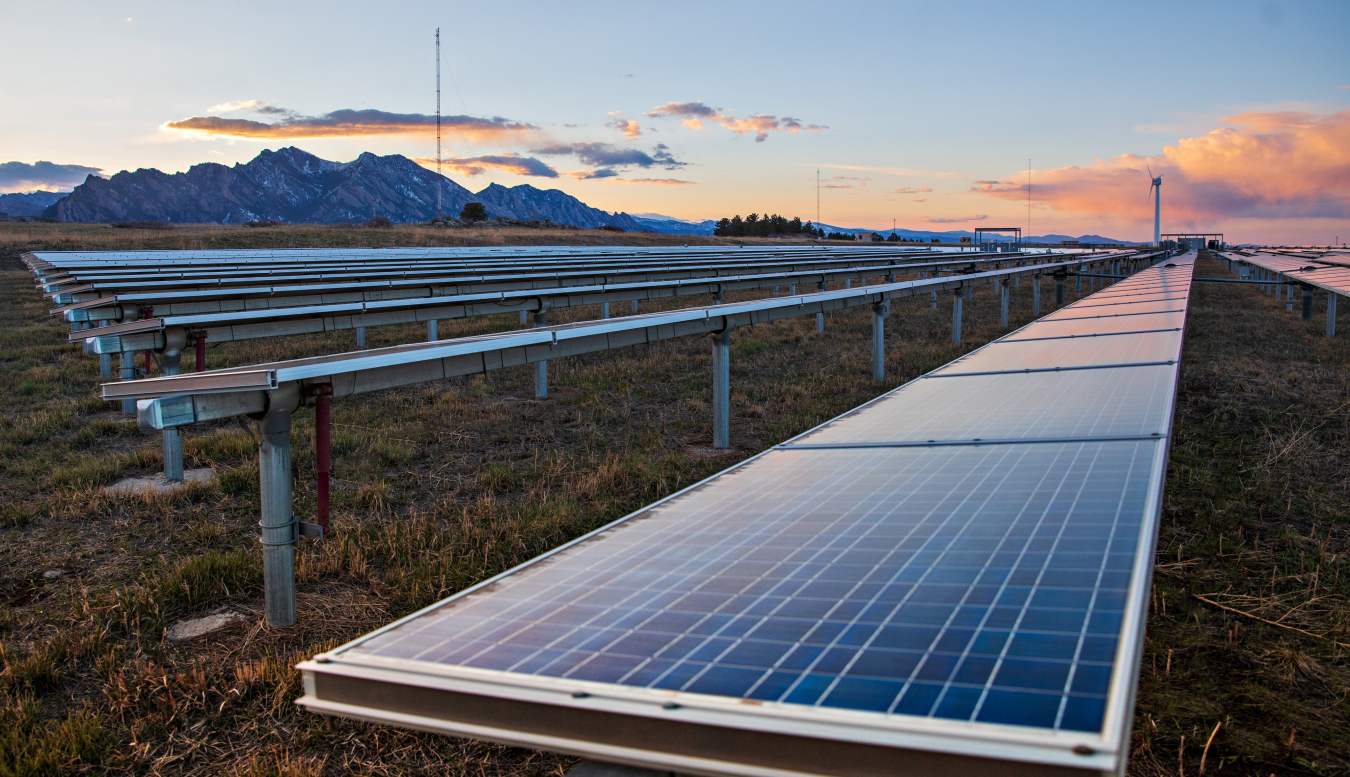The PV Fleet Initiative has been collecting performance data from a nationally representative sample of PV plants and has developed transparent, automated analysis techniques, shedding light on many aspects of solar power productivity across the country.
Solar Energy Technologies Office
June 27, 2023
The sun sets on a photovoltaics array in the mountains at the National Renewable Energy Laboratory (NREL) in Colorado. Photo by Werner Slocum, NREL
Learn about SETO’s American-Made Solar Data Bounty Prize.
Over the last three years, 2,200 solar sites, about 10% of all non-residential photovoltaic (PV) systems, have had their performance recorded and logged every 15 minutes. What can we learn from that immense trove of information? Understanding how these systems age and perform in different environments has led to more efficient operation of PV installations and will help deploy more projects across the country.
The PV Fleet Performance Data Initiative (PV Fleet), a $5.25 million project led by the National Renewable Energy Laboratory (NREL) with support from the U.S. Department of Energy Solar Energy Technologies Office (SETO), was launched in 2019. The NREL team has analyzed data from nearly 19,000 inverters from commercial, industrial, and utility-scale systems to identify which factors impact long-term solar PV system performance across the country, including module technology, system size, and geographical location.
With this data, the team developed a performance assessment of solar systems and have provided the first estimate of the degradation rate—the rate that systems lose the ability to generate power as they age—representative of the entire U.S. PV fleet, finding that the median performance loss is around 0.75% per year. Previous studies by national laboratories have yielded similar results, but PV Fleet provides results with a higher level of confidence than previous studies. This analysis breaks new ground, calculating the degradation rate using direct measurements from hundreds of PV systems. The results are considered representative of the entire U.S. PV fleet given the diversity of technologies and locations monitored. The analysis also found that the rate is climate-dependent, with panels degrading slower in cooler climates. Furthermore, performance loss rates did not differ much on account of different module technologies or other factors.
In addition to analyzing the national PV fleet, the initiative provides confidential, detailed assessments of system performance to partnering PV plant owners and operators. System owners can use this information to benchmark their performance against the industry average, leverage software tools developed by NREL and other national labs to better understand which factors contribute to their fleet’s performance, and to improve the efficiency of their operations.
This data also improves the accuracy of financial assessments for current and future PV power plants by providing better inputs to the estimates of how much power a solar system may produce over its lifetime. Performance assessments of PV systems impact profit estimates and financing estimates, so knowing how PV systems are expected to perform in particular locations, using a specific technology, for their complete lifetimes is crucial for the valuation of those systems before they are installed. Accurate PV system performance assessments can boost solar deployment by attracting investors and project developers.
The PV Fleet Initiative has enabled NREL to test and hone analytical tools using large-scale, real-world data, and because they are open source, the entire PV industry and research community can also benefit. With the help of SETO and other industry players, the PV Fleet Initiative has developed transparent, automated analysis techniques, shedding light on many aspects of solar power productivity across the country. Visit NREL’s PV Fleet Initiative webpage to download the datasets and learn more about the fleet-scale performance analysis. Learn more about SETO’s research in Photovoltaic Reliability and Standards Development and view resources on solar data analysis and modeling for PV system owners.

